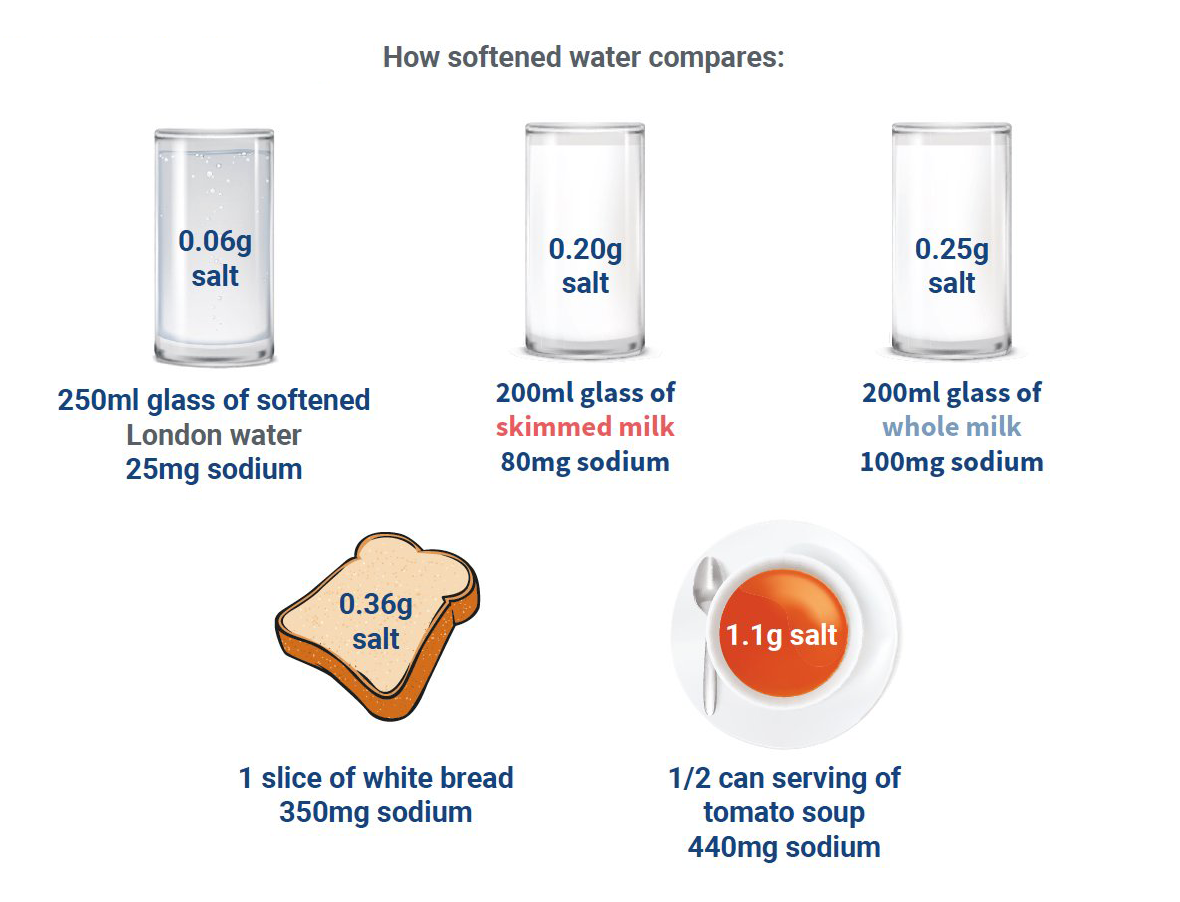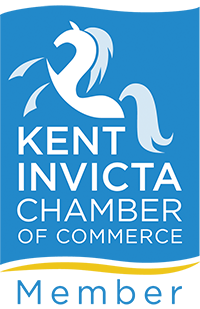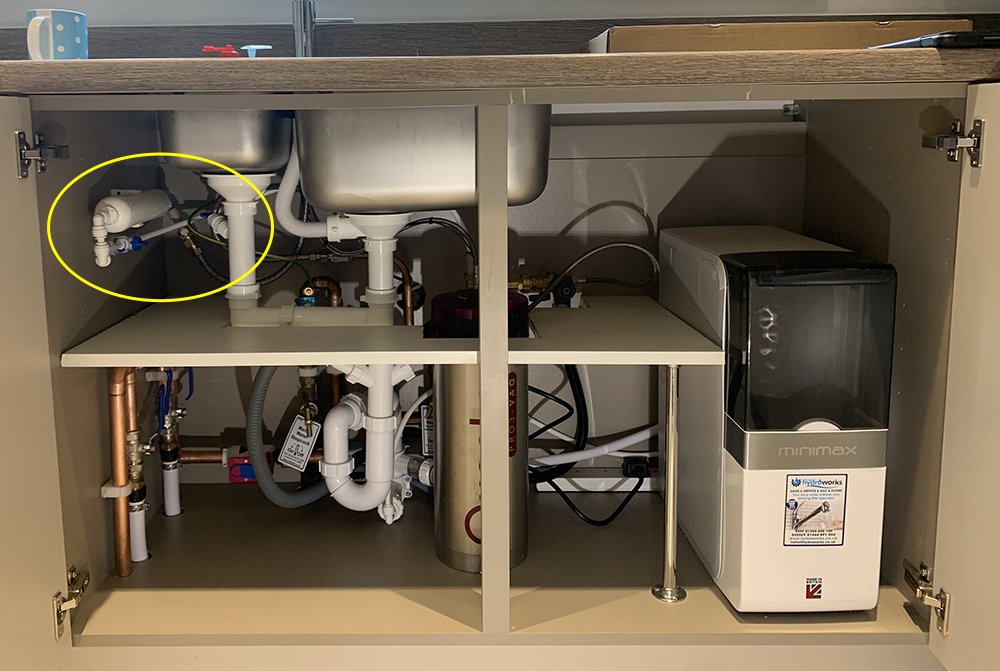Wondering if it’s safe to drink softened water? You’re not alone.
This page answers the most common questions and clears up the myths — all backed by science, experience, and decades of industry knowledge.
Here’s what we cover - simply scroll down to the section that is important to you:
- Here's what you need to know
- What is softened water?
- What does softened water taste like?
- Debunking the myths
- You can trust our information
- The science and safety of softened water
- What about babies and softened water?
- The history behind how the myth began
- Expert installations that work for you
- A final thought to help you decide
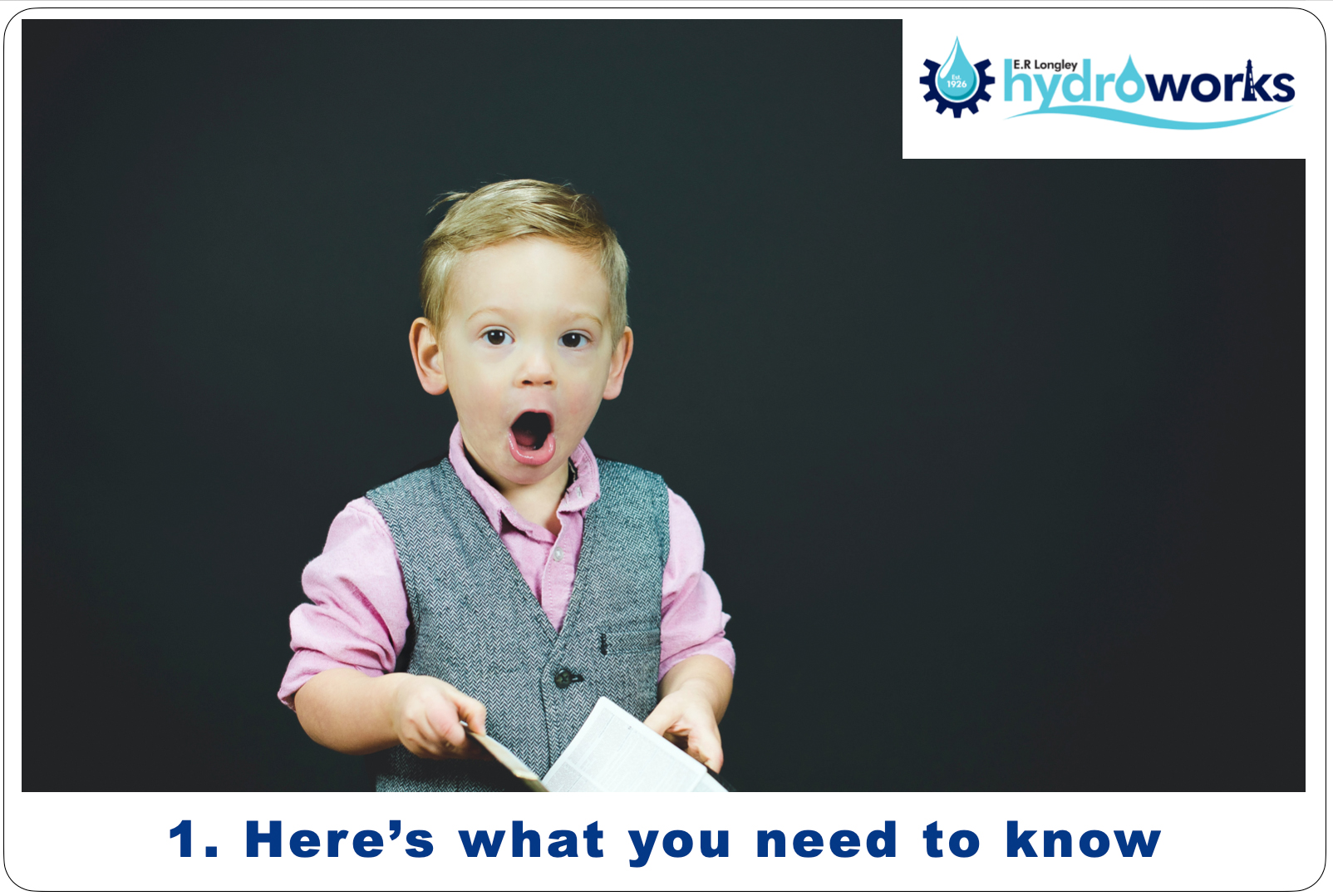
1. Here’s What You Need to Know.
If you’ve ever wondered, “Can you drink softened water?”, the short answer is: YES, you can!
Softened water is perfectly safe to drink, and many people find it more enjoyable due to its smoother, slightly sweeter taste. This improved taste comes from the removal of minerals like calcium and magnesium, often described as “chalk,” leaving water that’s refreshingly pure and hydrating.
❓Did you know...
- Hard water often has an earthier taste, and if you roll hard water over your tongue, you can often feel the texture of the dissolved chalk in your mouth. When trying softened water for the first time, I would suggest taking a sip, garlge to rinse out your mouth and then swallow. Then take a second sip. You'll then notice how smooth the water tastes, and how very refreshing it is!
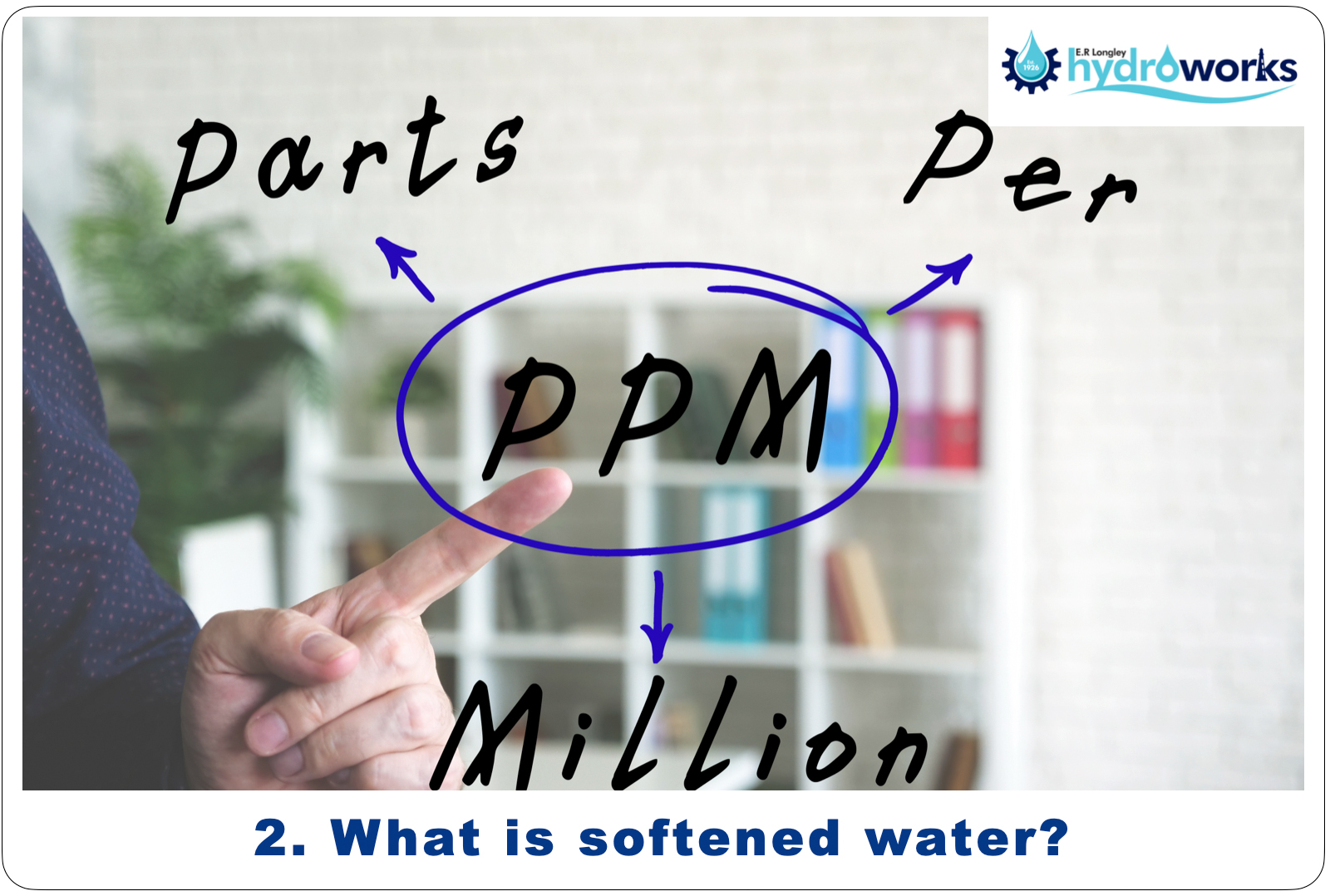
2. What is Softened Water?
How Do You Soften Water?
There is only one way to soften water, and that through an ion exchange process to remove calcium and magnesium from hard water, swapping them for tiny amounts of sodium (not table salt!).
The result?
Beautifully softened water that prevents scale build-up, helps appliances last longer, makes cleaning easier — and tastes refreshingly smooth to drink.
Anything and everything else you see advertised - magnets, conditioners, miracle gadgets - are just marketing hype. (And believe me, there's plenty of hype in this industry - much of it complete rubbish!)
So, How Does a Water Softener Actually Work?
Water softeners use ion exchange resin to remove calcium and magnesium from hard water, swapping them for tiny amounts of sodium.
If you have a water softener installed at home, here’s what’s happening behind the scenes:
-
Hard water flows through the softener’s resin bed.
-
The resin captures the hardness minerals (the “chalk”).
-
When the resin gets full, the softener cleans itself through a process called 'Regeneration'.
-
During regeneration, the softener flushes the captured chalk down the drain using a brine (salt water) solution.
-
After that, fresh water washes out any salty residue — leaving you with pure, refreshing softened water that is safe to drink and ready for everyday use.
Many of our customers describe softened water as slightly sweeter and incredibly refreshing — and once you’ve tried it, it’s hard to go back!
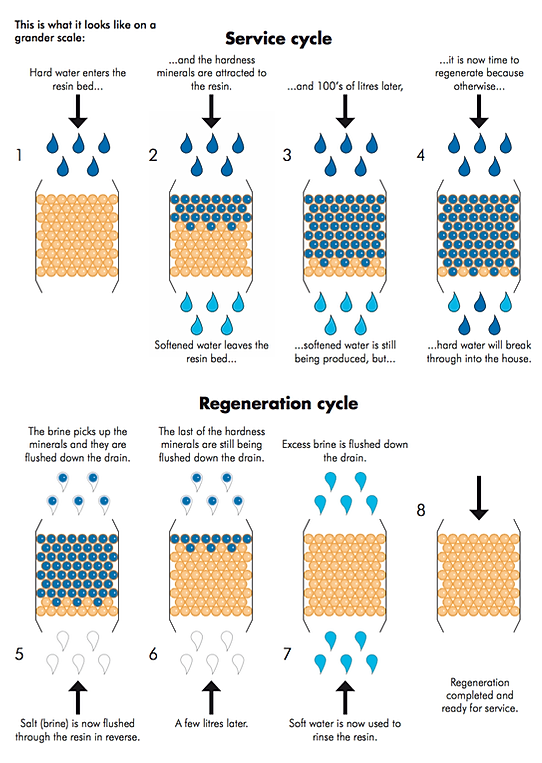
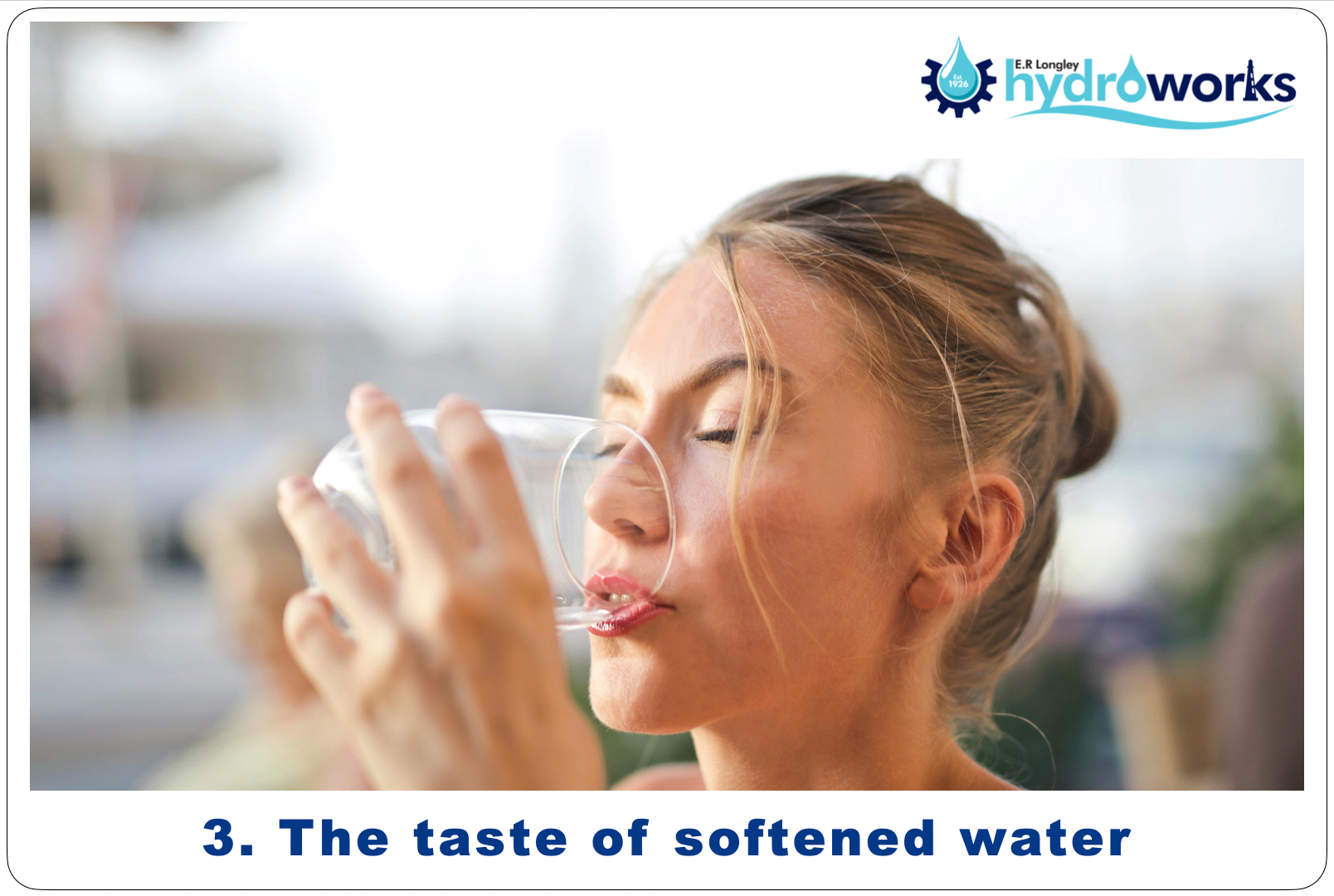
3. The Taste of Softened Water
What Does Softened Water Taste Like?
Everyone has a different perception of taste — it really depends on individual preferences.
We get so used to the flavour of chalk in our tap water that hard water starts to feel “normal” to us.
When the chalk is removed, many people describe softened water as tasting slightly sweeter and much more refreshing — in fact, the way water naturally should taste.
(See the photo to the right — that’s a glass of hard water where the dissolved chalk is invisible. When we treat the same water sample with a special chemical, the chalk suddenly becomes visible — it’s amazing how much chalk is dissolved even in a small amount of hard water!)
Many of our customers tell us they start drinking more water once they have softened water, simply because they find the taste so much more enjoyable.
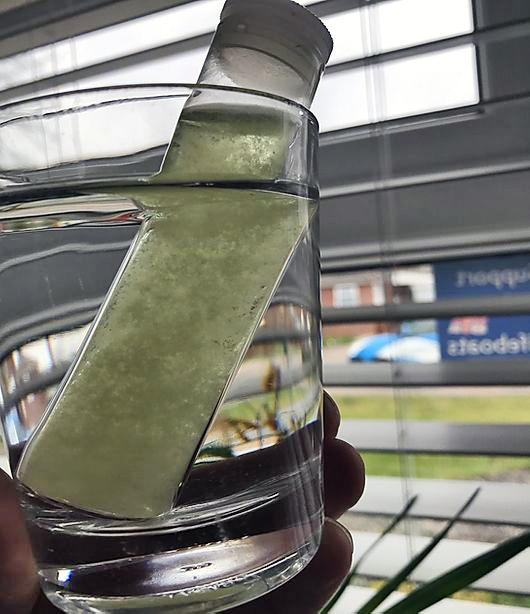
The Exception to the Taste Rule
Very occasionally, some customers say they detect a slight salty taste. That sometimes can be explained to the fact that they are putting salt in the softener, and so associate the tast with salt.
In very rare cases, just the smallest ppm of sodium can be detected by those with exceptionally sensitive taste buds. One particularly memorable customer was an official Tea Taster for a global tea company, whose profession involved tasting hundreds of subtle tea blends daily. She explained that her sense of taste was extremely refined — and that most people would never notice the difference she could detect.
It’s important to remember:
-
This level of taste sensitivity is incredibly rare — truly “one in a million.”
The Precipitation Test
If you’d like to try a simple experiment yourself:
-
Take a glass of hard water and hold it up to the light — it will look completely clear.
-
Take a sample of that same water, add a precipitating agent (which we can do for you), and you’ll immediately see the chalk appear.
If you sip the original hard water while looking at the precipitated chalk, you’ll notice the water feels fuller or heavier in your mouth — that’s the dissolved chalk you’re feeling roll across your tongue.
Removing chalk changes the flavour of water.
When you first try softened water, the taste might feel slightly different — everyone’s experience is unique.
When I (Laurence) first tried softened water, I described it like tasting 'boiled water gone cold'.
My mother thought it had a slight metallic taste. My father? He couldn’t tell the difference at all! And many of our customers have said it simply tastes beautiful, clean, and fresh. Over time, most people find they not only adapt — they actually prefer softened water.
Something to note is that sometimes when selling water softener, sales people (not from Hydroworks) will come into your home with a portable water softener so that you can taste softened water - which I would personally never drink the water from - the water always tastes artificially different from those devices - often due to incorrect flushing out of brine water or bacteria buildup due to poor maintenance!
A Short Case Study
One of our Croydon clients was initially very concerned about whether she’d like the taste of softened water. When we installed her new softener, we fitted a hard water tap at the kitchen sink, just to be safe.
About a year later, when I went back to deliver some salt, she laughed and told me she’d adapted to softened water straight away — and now she even takes a flask of softened water with her when visiting friends and family, just so she can enjoy her tea and drinking water the way she likes it!
That’s how great softened water can taste — beautiful and refreshing!
A Small Note About "New Softener' Taste
Softened water can taste a little different for the first 2–3 weeks after installation. That’s because the softener’s resin is freshly manufactured — just like a new oven smells different when first used.
Over a few weeks, the taste settles beautifully — and most customers end up loving the refreshing, cleaner taste.
Always remember:
-
Softened water will always taste different from hard water — because there is no rock chalk that masks other flavours.
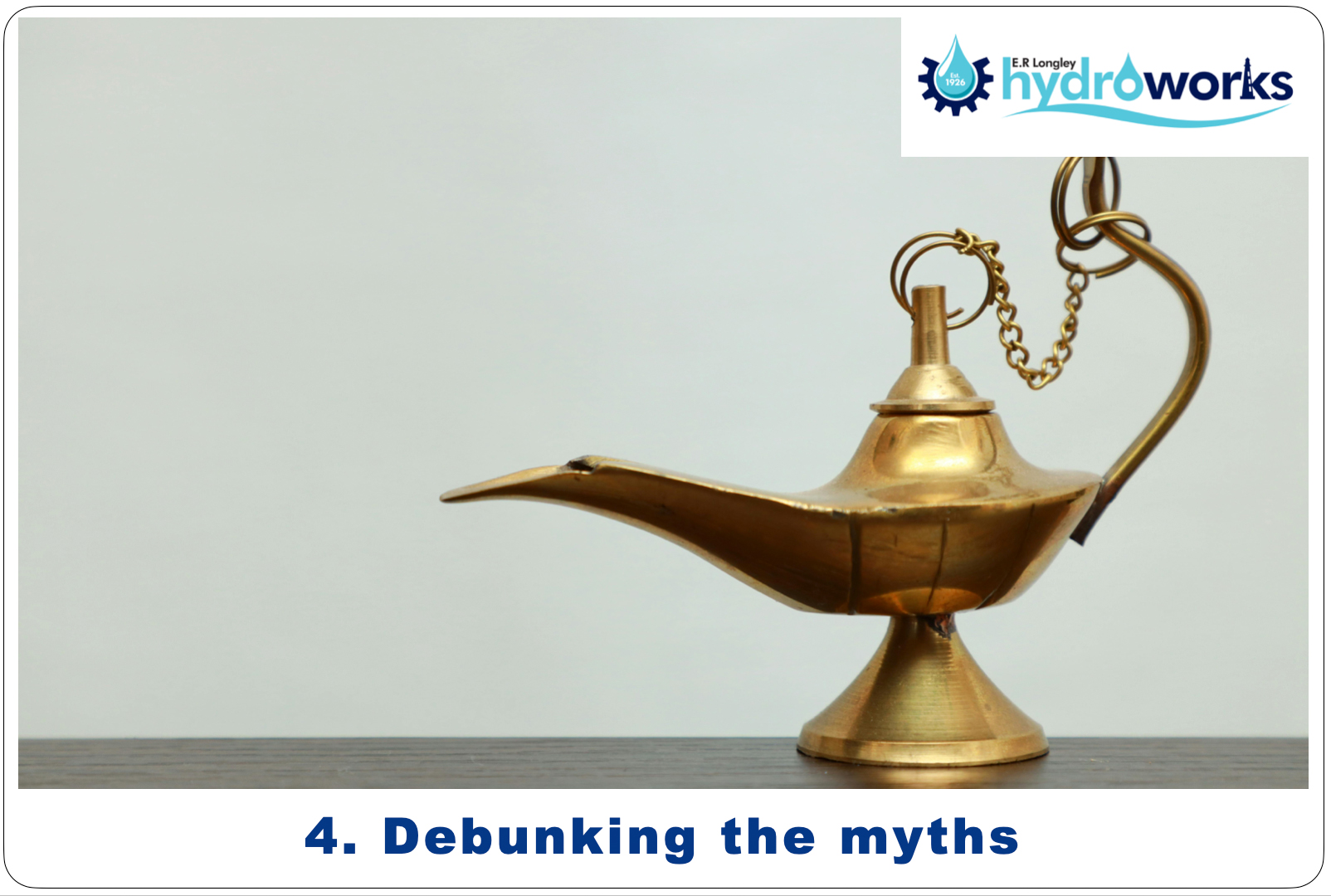
4. Debunking the Myths About Drinking Softened Water
Debunking the "Salty Water' Myth
There’s a common myth — even among professionals in my own industry — that softened water tastes salty because we use salt in water softeners.
I’ve even heard some very knowledgeable people mistakenly call it “salted water.”
So let’s set the record straight, once and for all:
There is no salt in softened water!
Salt is used inside the softener to clean the system, but it never ends up in your drinking water.
What you get is simply softer, smoother water that can taste slightly sweeter (because there is no chalk in the water) — not a glass of saltwater!
Why Is There So Much Mis-information Out There?
The simple answer? PROFIT!
Some companies create fear and doubt in customers’ minds to sell products that don’t truly work.
And lately, we’ve seen a growing trend where well-known celebrities lend their names to these “miracle” solutions on social media — often without fully understanding the facts. It might boost sales, but it creates even more confusion for customers trying to make an informed choice.
The good news is, the truth is simple — and once you know it, it’s easy to see through the noise.
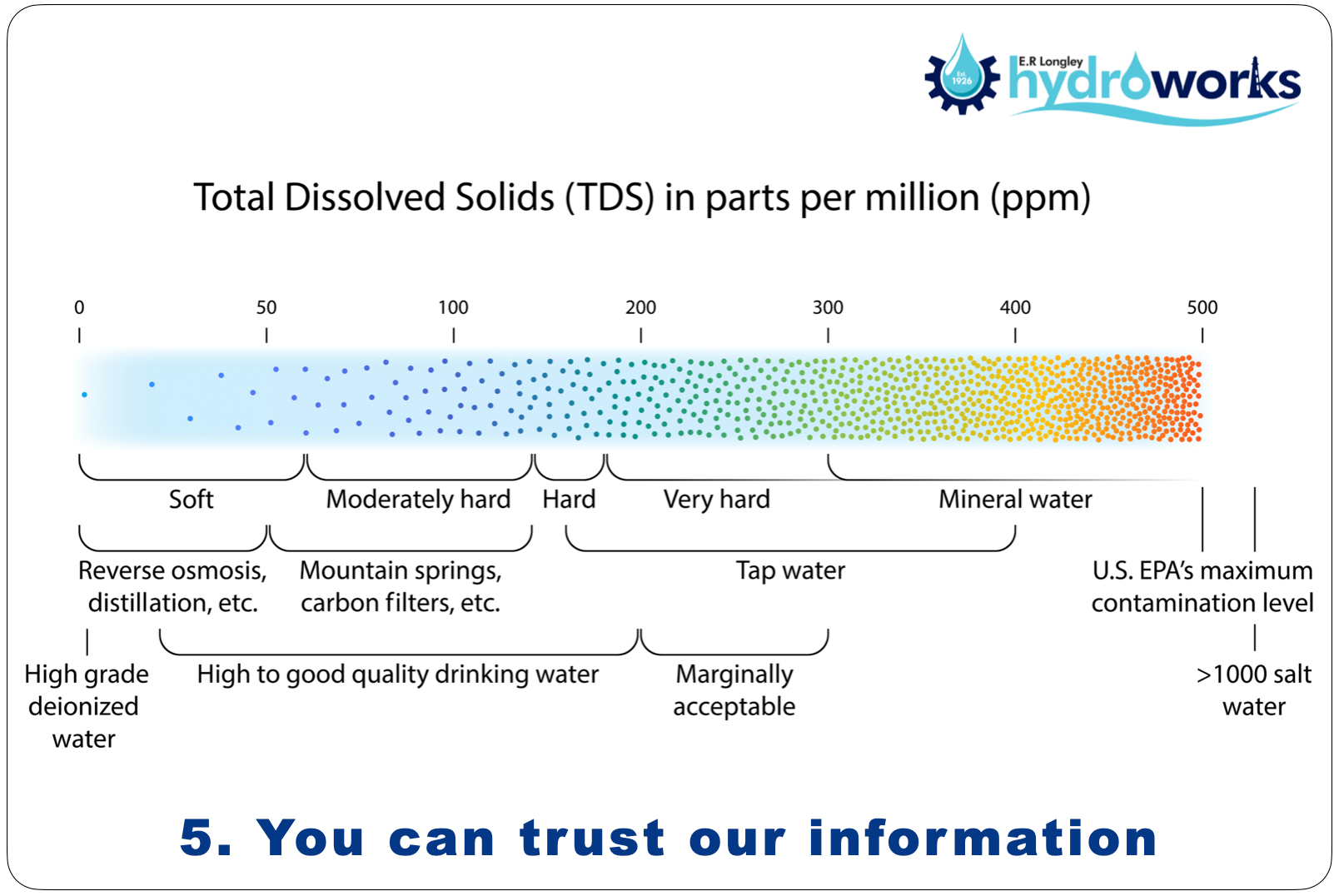
5. Why you can trust what you're reading here
I come to this conversation from a place of real experience.
I’ve been around the water softening industry for over 25 years, and I’ve been fortunate to learn directly from some of the most respected names in our sector — including Neil Grant of Kennet Water, Harvey Bowden of Harvey Softeners, and my own father, Arthur Willis, a widely respected industrial scientist.
When I joined Harvey Softeners in 2009, Harvey and I often discussed the public perceptions around drinking softened water. He explained that the myth was so deeply rooted that changing people’s minds might be nearly impossible.
At the time, Harvey had written a detailed document on the safety of softened water — but it was quite technical and lengthy, and difficult for many consumers (and even some in the trade) to digest.
As Harvey's Dealer Manager, I proposed writing a simplified one-page summary to help retrain our national dealer network. Harvey reviewed and approved it — and off I went, training professionals and tradesmen across the country.
You can download my original document here if you’d like to see it — or keep reading for the key facts.
Later, when I purchased Hydroworks and became an NHS Approved Contractor, I decided to go even further — writing this page you’re reading now, with even deeper research and reassurance.
Before we continue:
The most important thing is that you feel comfortable.
If you would prefer to have a separate hard water drinking tap installed alongside your softener, that’s absolutely fine with us.
It’s always your choice.
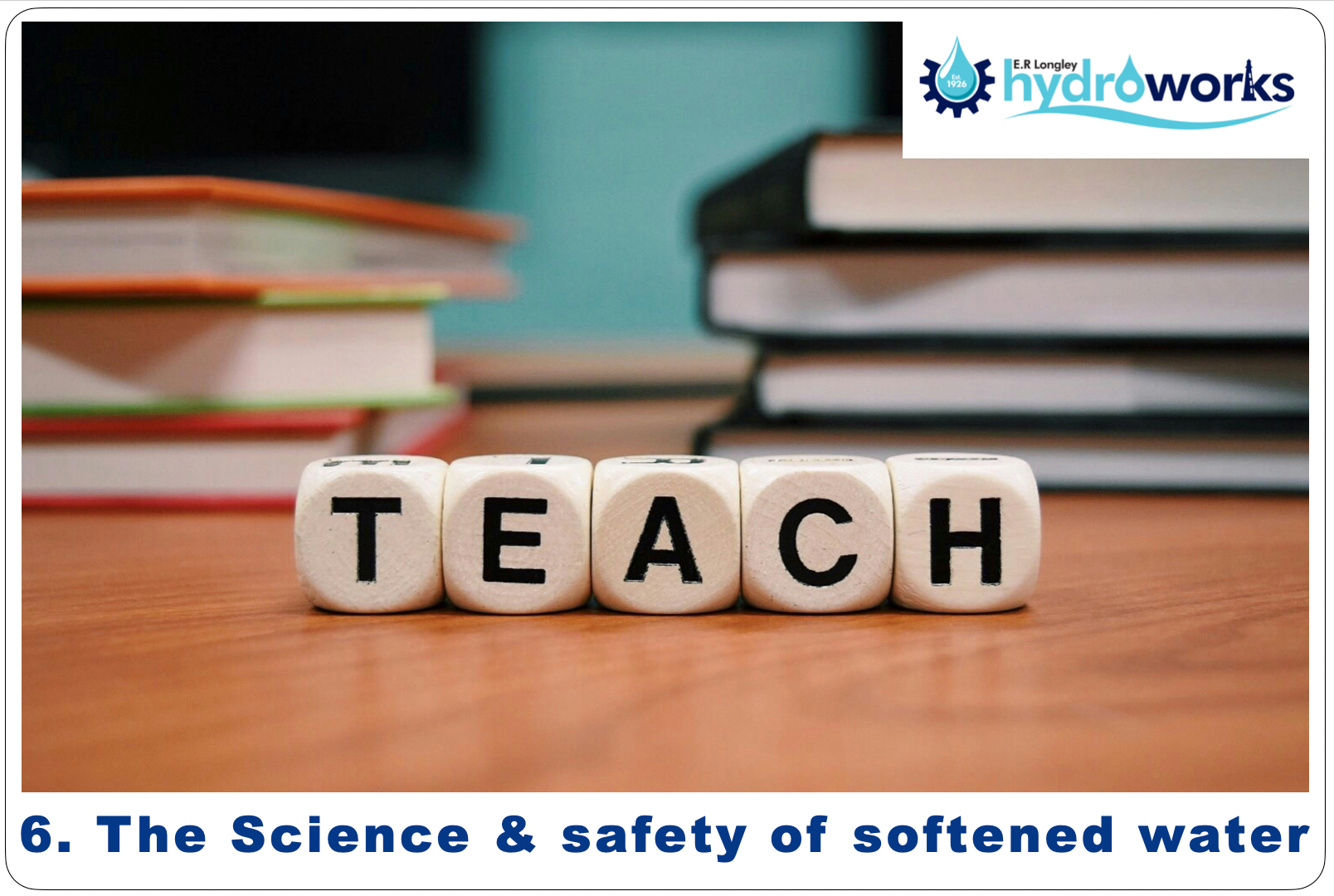
6. Can You Drink Softened Water? (The Science & Safety)
If you're ready, Let's Look at the Facts
Can I drink softened water?
Yes… and it's even considered "wholesome".
The definition of "wholesome" is "conducive to or suggestive of good health and physical well-being".
In this context, 'Wholesome' means healthy and drinkable.
How Safe Is Softened Water to Drink?
Well, over a million people a year drink softened water — and in over 100 years of worldwide use and research, there are no documented cases of harm caused by drinking it!
That’s a pretty reassuring record!
However, it’s worth noting that over 85% of US households have hard water (compared to around 60% here in the UK), and in some parts of the USA — such as California — there are local regulations around softened water use.
Why Is That?
It mostly comes down to the scale of water softener usage in America: Approximately 30% of homes there have water softeners installed. And, much like traditional American cars, many US softeners tend to be large and inefficient, using a lot of salt during the regeneration process.
With so many homes using high-salt, high-water systems, some regions raised concerns about increased salinity affecting water quality and agricultural land. Which, when you think about it, makes perfect sense: If millions of homes are flushing large amounts of brine into the system, it’s bound to have an impact.
What About the UK?
The situation here is completely different. In the UK, just 8% of homes in hard water areas have water softeners installed — and importantly, the UK (and Europe) regulate softener performance, salt usage, and environmental standards much more closely.
In short:
In the UK, it’s a myth that you cannot drink softened water.
You absolutely can — safely and happily.
Wow! But I thought salt was bad for you?
It’s a common question:
If salt is used in softeners, doesn’t that make the water salty?
The answer is no.
The salt used in a water softener never enters your drinking water.
Salt is only used to create a brine solution that flushes away the captured chalk (calcium and magnesium) during the cleaning process, called Regeneration.
When your softener is running normally, it removes chalk through a process called ion exchange, swapping hardness minerals for tiny traces of sodium.
After each regeneration cycle, the softener thoroughly rinses itself with fresh water — leaving you with pure, fresh-tasting softened water, safe for drinking.
How Much Sodium Are We Talking About?
The traces of sodium left in softened water are extremely minimal — and well within safe limits.
Let's put this into perspective:
-
The UK Department of Health recommends a sodium intake of 2,400mg per day for adults.
-
A glass of softened water might add just 12–30mg of sodium — barely a fraction of your daily allowance.
What Do Health Authorities Say?
The World Health Organisation (WHO), in their Guidelines for Drinking Water Quality (Third Edition, 2003), state:
“No firm conclusions can be drawn concerning the possible association between sodium in drinking-water and the occurrence of hypertension. Therefore, no health-based guideline value is proposed. However, concentrations in excess of 200 mg/l may give rise to unacceptable taste.”
In short:
-
WHO does not set a health limit on sodium in drinking water.
-
They simply note that above 200mg/l you might notice a taste — but not that it’s unsafe.
In the UK, for infant formula preparation and for individuals on medically prescribed low-sodium diets, it’s recommended to keep drinking water below 200mg/l of sodium.
For everyday adult use?
Softened water is perfectly safe — and often even more enjoyable — to drink.
A quick note for parents:
If you’re preparing feeds for a young baby, there are a few extra things to consider.
We explain everything fully a little further down this page.
❓Did You Know There's Already Sodium in Mains Tap Water?
Our mains water across the UK naturally contains sodium — and this is perfectly normal.
The level of sodium is carefully regulated by the Drinking Water Inspectorate (part of DEFRA), who guide local water authorities to ensure a maximum of 200mg/l of sodium in drinking water.
This guideline shows that mains water with up to 200mg/l of sodium is considered safe for everyone to drink — unless medically advised otherwise. The limit is set conservatively to ensure water is safe even for people with medically restricted diets.
If you’d like to dive deeper, you can download the DEFRA Drinking Water Inspectorate document.
How Much Sodium is in Local Mains Tap Water?
The average sodium levels in local mains water are easily obtainable from water companies — and across Kent and Sussex, the levels are significantly below the 200mg/l guideline.
Here’s a snapshot of typical sodium levels in our area:
- Ashford – 13mg/l
- Brighton – 23mg/l
- Bromley – 28mg/l
- Canterbury – 15mg/l
- Chatham – 23mg/l
- Chislehurst, Orpington & Petts Wood – 48mg/l
- Croydon – 21mg/l
- Dartford – 22mg/l
- Deal – 22mg/l
- Dover – 13mg/l
- Eastbourne – 22mg/l
- Faversham – 12mg/l
- Folkestone – 17mg/l
- Haywards Heath – 35mg/l
- Herne Bay – 21mg/l
- Horsham – 20mg/l
- Kemsing – 17mg/l
- Maidstone – 26mg/l
- Sandwich – 18mg/l
- Sevenoaks – 23mg/l
- Thanet – 22mg/l
- Tunbridge Wells – 20mg/l
- Whitstable – 21mg/l
- Worthing – 15mg/l
How Much Sodium is Added During Softening?
When we soften water, sodium is added, but in very small amounts.
Here’s the technical detail:
-
For every 100mg/l of calcium carbonate hardness removed, about 46mg/l of sodium is added.
The important bit to know:
-
In all of Kent and Sussex, Surrey and South East London, after softening, sodium levels stay comfortably within the 200mg/l recommended limit.
-
It’s only in areas with extremely hard water (typically over 425ppm — like parts of Suffolk or Norfolk) that softened water might exceed this threshold (and some private supplies).
If you live in an area where mains water hardness is exceptionally high (which is rare in this region), we’ll always guide you personally to make sure you’re making the best choice for your home and family.
Here’s what softened water typically looks like, town by town:
- Ashford – 138mg/l
- Brighton – 148mg/l
- Bromley – 159mg/l
- Canterbury – 156mg/l
- Chatham – 187mg/l
- Chislehurst, Orpington & Petts Wood 191mg/l
- Croydon – 146mg/l
- Dartford – 163mg/l
- Deal – 166mg/l
- Dover – 153mg/l
- Eastbourne – 126mg/l
- Faversham – 130mg/l
- Folkestone – 162mg/l
- Haywards Heath – 81mg/l
- Herne Bay – 146mg/l
- Horsham – 94mg/l
- Kemsing – 101mg/l
- Maidstone – 174mg/l
- Sevenoaks – 187mg/l
- Thanet – 166mg/l
- Tunbridge Wells – 167mg/l
- Whitstable – 146mg/l
- Worthing – 138mg/l
How is hard water measured - and when is soft water "truly soft"?
There are a few different ways to measure water hardness, and you can often get an approximate hardness level by ringing your local water authority: South East Water (for East Kent) or Southern Water (for West Kent and Sussex), and Thames Water for London.
Alternatively, we’d be happy to come and test it for you, based on your home’s actual water supply.
Sometimes, we find that even different parts of the same street can have slightly different hardness levels! It sounds bizarre — but it all depends on which direction the water main comes in. (Some longer roads and estates might be fed from different sources.)
As professionals, when we test water, we prefer to use the Hach test kit, because it’s the most accurate method available outside of a laboratory.
The Hach test kit measures hardness using the universal method: Parts Per Million (PPM) — which is directly linked to the American measurement of Grains per Gallon.
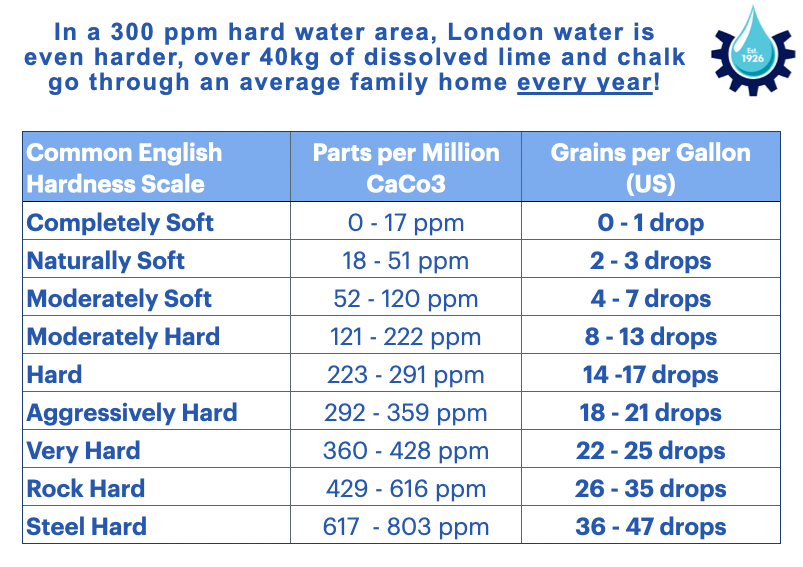
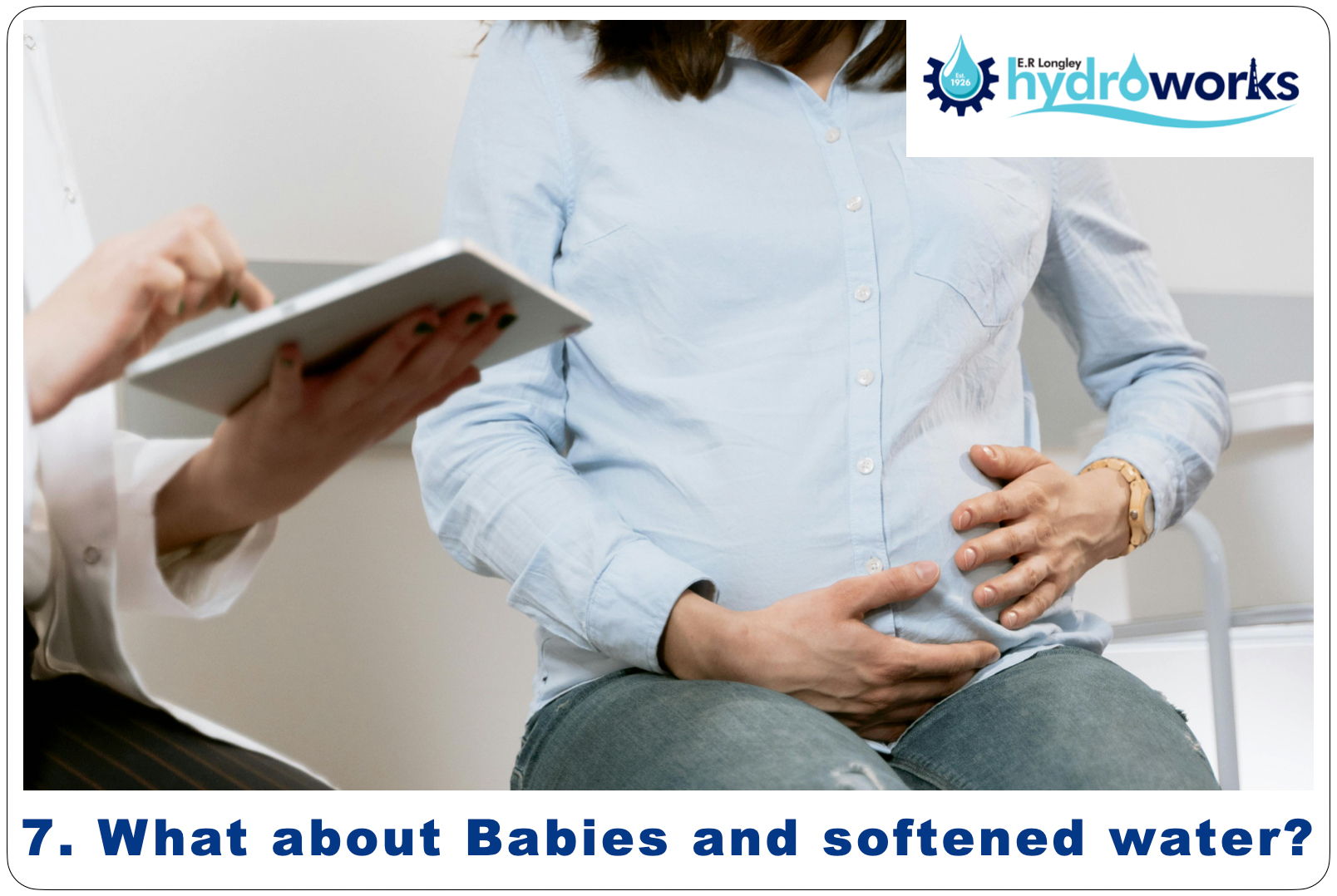
7. What About Babies and Softened Water?
This is probably the most complex — and most emotive — question to answer.
That’s why the best advice we can give any parent of a young baby is simple: Do your own research, and make the decision that feels right for you and your family.
To help you, here’s a clear overview of what the water softening industry says and what the NHS say on the matter:

What the Water Softening Industry Says:
The industry follows guidance from the Drinking Water Inspectorate, part of DEFRA, which sets strict regulations for water quality and safety.
The leader in the European water softening sector is Harvey Water Softeners. Their chairman, Harvey Bowden, was a driving force behind clarifying the regulations on softened drinking water.
On their website, Harvey Water Softeners state:
"We generally don't recommend using softened water with baby feed. You can use softened water for baby feeds if the sodium concentration is below the 200 mg/l limit for sodium. So, it isn’t recommended if you are unsure of your water’s sodium concentration - which is likely in most cases. The 200 mg/l sodium level was set by the Drinking Water Inspectorate in the Drinking Water Regulations. This limit was adopted to make sure that the total sodium levels in baby feed, plus the water added, does not exceed 350 mg/l, considered a safe level for infants."
In simple terms:
-
The concern is about sodium levels during the first 6 months of a baby’s life while their kidneys are still developing.
-
After about 6 months, as the baby grows from newborn to infant, their tolerance for sodium increases naturally.
What are the options for parents?
-
Leave a hard water drinking tap connected.
-
Or simply fill a jug from an outside tap (which is usually unsoftened) - or buy bottled water through this time - and store it in the fridge for making up formula during those first weeks.
What the NHS Says:
The NHS takes a slightly different approach, focusing mainly on sterility and infection prevention rather than sodium levels.
Their advice is:
“To reduce the risk of infection, it’s best to make up feeds one at a time, as your baby needs them. Use freshly boiled drinking water from the tap to make up a feed. Do not use artificially softened water or water that has been boiled before.”
In their guide for parents, they add:
“It is best to use drinking water from the tap that has been freshly boiled (and cooled slightly to 70°C or above) to make up a feed. Do not use water that has been previously boiled or artificially softened water. This is because the balance of minerals in previously boiled water and artificially softened water may not be suitable for making up formula feeds.”
The NHS bases this advice on the fact that there are many different types of formula milk available, some with varying levels of sodium and minerals.
Hydroworks Best Advice:
Over the years, we’ve found that many customers who initially install a hard water drinking tap end up preferring the taste of softened water — and stop using the hard water tap altogether!
When hard water taps are used infrequently, they can become bacteria or algae harbours — which is something to consider if you plan to keep a separate tap only for very occasional use.
In general, Kent, Sussex, and South East London fall well within low sodium zones, with the exception of a few homes using private boreholes or well water.
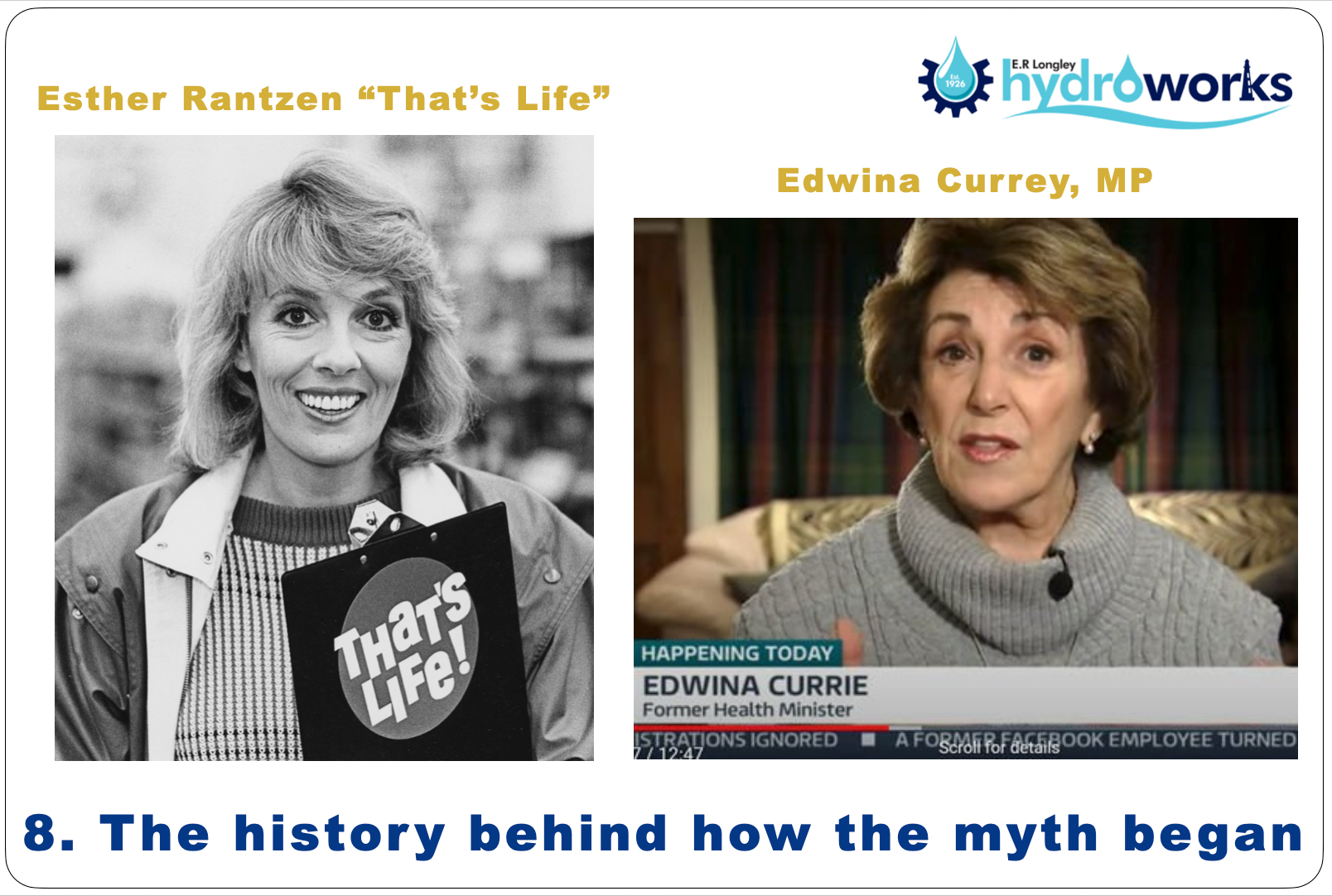
8. The History Behind the Myth
Where did the myth come from?
TV Personality Esther Rantzen's Softened Water – Cot Death Claim in the 1980's
In the mid-1980s, prominent BBC presenter Esther Rantzen – known for her satirical consumer affairs show 'That’s Life!' – raised concern about a possible link between home water softeners and cot death (Sudden Infant Death Syndrome).
Reports indicate that Esther (or at least her programme) suggested that babies in homes using softened tap water might face a higher SIDS risk. This claim drew wide attention, and so the myth began.
Many parents, understandably alarmed, stopped using softened water for drinking or preparing baby formula. As a precaution, parents who owned water softeners shut them off, and the industry saw a 40% decline in sales over the 18 months that followed - eventually a decision was made as to how to overcome the drop in sales, and it became common in the UK to install a separate hard-water tap for drinking.
At the time, SIDS was poorly understood, so Esther Rantzen’s theory – tying SIDS to something in the water – resonated with anxious families.
However, the water softening industry and medical experts maintain that this was a misleading claim, not backed by solid evidence.
No scientific study at the time confirmed any link between softened water and cot deaths, and the notion is now regarded as an unfortunate - but understandable - media-driven myth from that period.
British MP, Edwina Currie’s Statement in the House of Commons and Her Fluoridation Theory
Edwina Currie, a Conservative MP (and later a junior health minister), did not specifically single out home water softeners as a SIDS cause in the 1980s. She did, however, make a related public statement about water quality and cot deaths.
In a January 1985 House of Commons debate on water fluoridation, Edwina Currie argued that adding fluoride to water might have unforeseen health effects. She noted that Australia – a fully fluoridated country – had the world’s highest incidence of cot deaths, speculating that there might be a link.
Edwina noted that fluoride can inhibit certain enzymes, and suggested this might contribute to infant mortality (since one theory held that SIDS could stem from an “oxygen-carrying enzyme” deficiency).
Importantly, Edwina made clear that her comments were speculative: She admitted there was no proven evidence of harm, but felt such possibilities couldn’t be entirely ruled out yet.
In short: Edwina Currie’s remarks were about fluoridation, not softeners, and she was voicing cautious concern rather than making a definitive claim.
Medical and Official Reactions at the Time
Health professionals and authorities swiftly rebutted the water-related SIDS theories.
In response to Edwina Currie’s fluoridation remarks, another MP rose in the Commons to cite expert findings from Australia: "extensive research by Australia’s health council in 1979 had found no link between fluoridated water and cot deaths". He also noted that Sydney – which had fluoridated water since the 1960s – "actually enjoyed one of the lowest SIDS rates in Australia".
Edwina Currie acknowledged this correction on the record, conceding the point. Likewise, the mainstream medical consensus did not support the idea that soft water (whether naturally soft or artificially softened by a water softener) was causing infant deaths.
Paediatric specialists warned that focusing on unproven causes could distract from known risk factors. At the time, major SIDS organisations like the Foundation for the Study of Infant Deaths (FSID) emphasised the need for rigorous research. (Notably, FSID invited Esther Rantzen to serve as a patron for its research efforts, underscoring that her involvement was welcome in raising awareness, but any specific claims needed scientific validation.) Doctors writing in medical journals were openly skeptical of “unlikely explanations” for cot death – a 1985 letter in The Lancet, for example, took aim at several unsubstantiated theories circulating in the media.
In summary:
By the mid-to-late 1980s, medical authorities and researchers uniformly agreed that there was no reliable evidence linking softened water (or water fluoridation) to SIDS.
Media Coverage and Aftermath
The softened-water scare received considerable media coverage, in part due to Esther Rantzen’s high profile on television.
While her intentions were almost certainly good - aiming to help prevent SIDS - the claim about water softeners was eventually clarified as unfounded.
Some newspapers and medical correspondents at the time ran pieces quoting experts who debunked the idea.
In the late 1980s, public messaging around SIDS shifted toward evidence-based risk factors:
- Infant sleep position
- smoking in the home
- overheating – all of which were confirmed by research.
By 1990, the launch of the "Back to Sleep" campaign (based on solid evidence) led to a dramatic drop in SIDS cases, and earlier speculative theories faded into history.
Today, in retrospect, the softened-water scare is often cited as an example of how well-intentioned media attention — without strong scientific backing — can fuel public myths.
Corrections from medical authorities ultimately followed both Esther Rantzen’s and Edwina Currie’s incursion into SIDS causes. No formal retraction by Esther Rantzen is recorded, but the consensus on the issue became clear: water softening was not a culprit in SIDS, and parents could safely focus on proven risk-reduction measures instead.
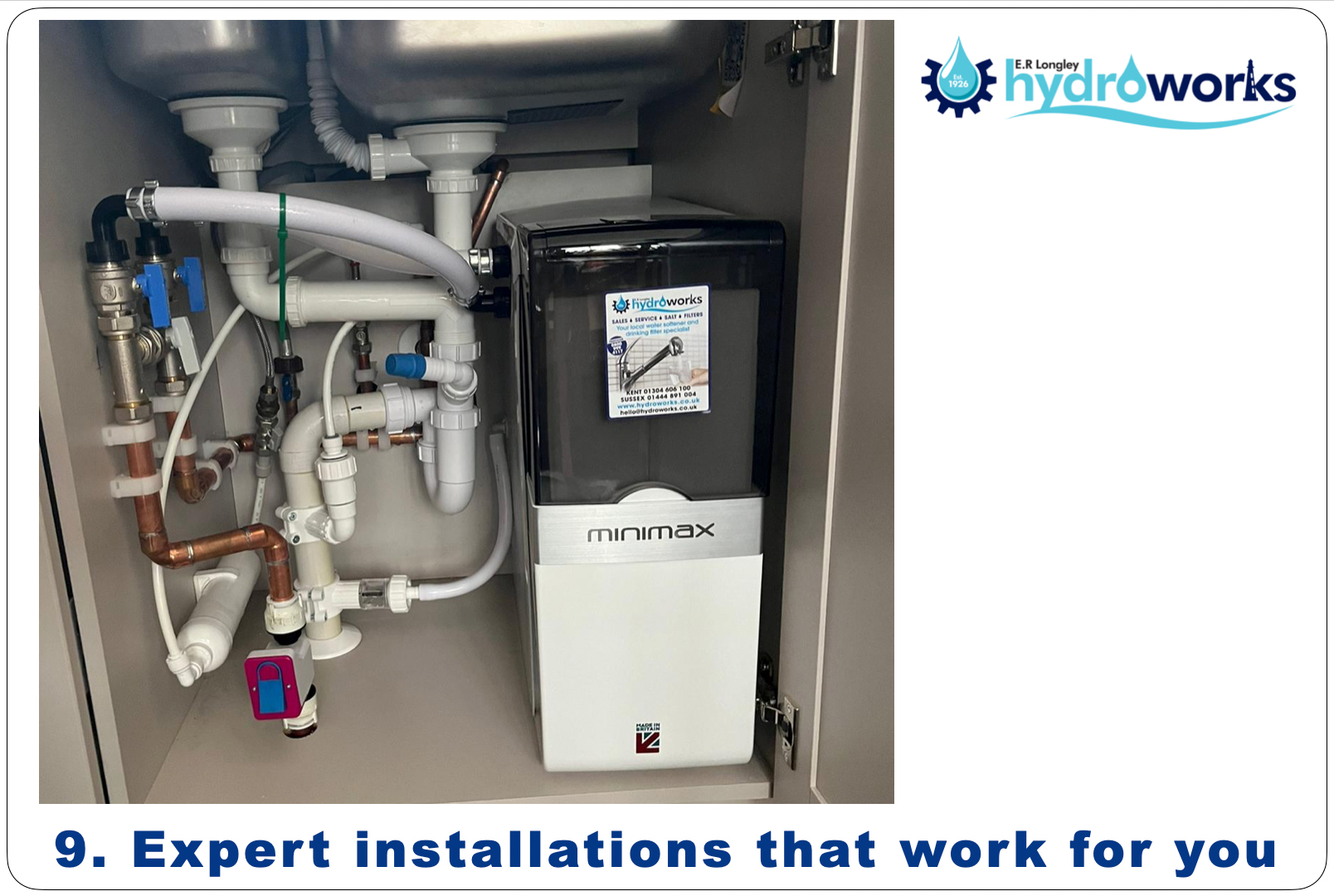
9. Thinking of Having Softened Drinking Water in Your Home?
You’ll be in great company.
Since we purchased Hydroworks in 2016, we have recommended softened drinking water to all our customers — giving them clear, honest information so they can make the best decision for themselves.
Of the thousands of installations we’ve completed, a very high majority of customers have chosen to enjoy softened-filtered drinking water — in fact of over 3,200 new installations and changeovers, only 12 customers later decided to fit a separate hard water tap!
How Many People Drink Softened Water?
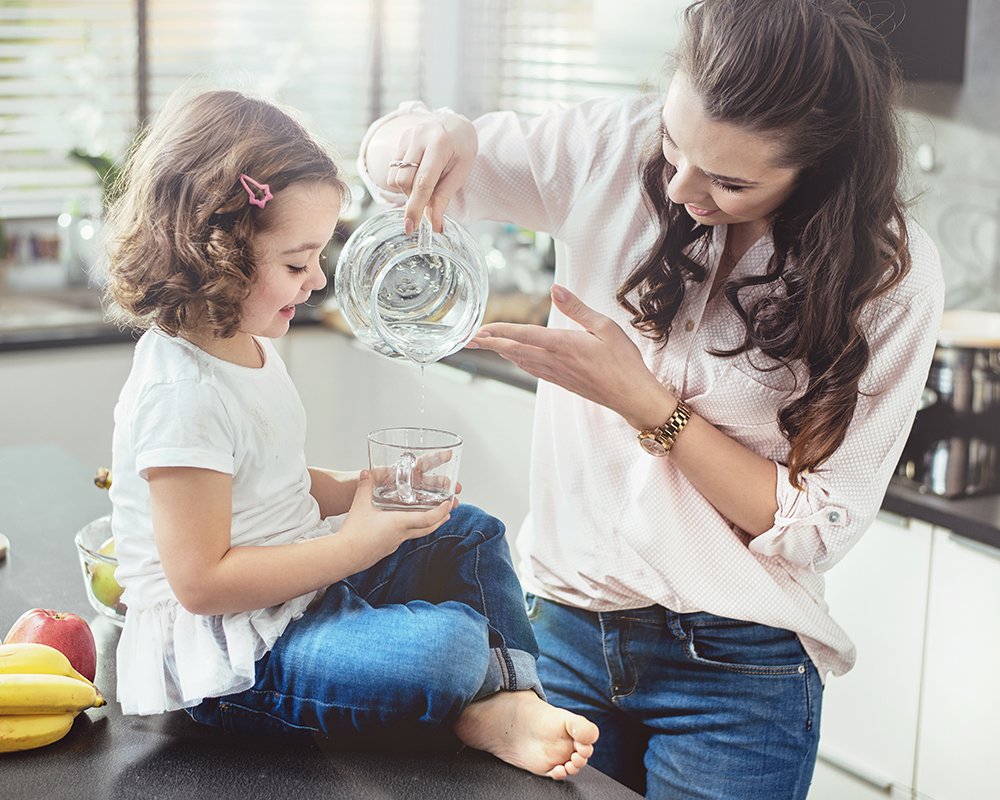
Millions!
Water softeners have been around for a long time.
During the 1920s and 1930s, they started being sold to homeowners, hotels, and businesses — often to improve the taste of drinking water.
In the USA, there’s no myth around drinking softened water — over one million people a year have a water softener installed in their homes.
Today, there are millions of water softeners in everyday use across America for drinking water purposes. In some parts of the US, almost everyone needs a softener because of naturally hard groundwater. In many other areas, people choose to install one for comfort reasons — to help with dry skin, to reduce scale, or simply to keep homes and appliances looking like new.
The same is true here in the UK — more and more people are choosing water softeners for both practical benefits and everyday enjoyment.
A Quick Interesting Fact:
Here’s a little statistic from the World Health Organisation’s Guidelines for Drinking Water Quality (Page 243):
"The taste threshold for the calcium ion is in the range of 100–300 mg/l, depending on the associated anion, and the taste threshold for magnesium is probably lower than that for calcium. In some instances, consumers tolerate water hardness in excess of 500 mg/l."
In short:
Many people around the world have been happily drinking both hard and softened water for generations.
Health and Safety Record:
To the best knowledge of the UK water softening industry — and in agreement with USA findings — there has never, in over 98 years of history, been a single health-related problem reported that was associated with drinking softened water.
Thinking About Having Softened Drinking Water in Your Home?
You’ll be in great company.
Since we purchased Hydroworks in 2016, we have recommended softened drinking water to all our customers — giving them clear, honest information so they can make the best decision for themselves.
Of the thousands of installations we’ve completed, a very high majority of customers have chosen to enjoy softened-filtered drinking water — in fact of over 3,200 new installations and changeovers, only 12 customers later decided to fit a separate hard water tap!
How Do We Do Installations at Hydroworks?
When we install softened-filtered drinking water, rather than a customer purchasing a 3-way tap or having a hard water tap, the majority of customers have chosen to opt instead to go straight for an inline filter. We have sourced a high-quality carbon – we are assured the same quality as used in the Brita filter – and this doesn’t leave an unpleasant aftertaste.
We connect the filter (circled yellow in photo) straight onto the mains cold water feed to the kitchen sink tap, and in most cases, this filter easily lasts over 12 months, giving a refreshing drinking water filter.
If you’re already drinking water with a Brita jug, then the great news is that once the initial ‘new softener’ taste has settled, the water will be very similar to the quality and taste you get from the Brita MaxtraPro filter.
Brita Water Filters and Softened Water
Ever wondered why tea made with Brita-filtered water tastes so good?
It’s because Brita’s top-selling MaxtraPro cartridges contain ion exchange pearls — essentially a version of the water softening resin we use in softened-filtered drinking water!
Softened, filtered drinking water is safe, healthy, and 'wholesome' — as recognised by the World Health Organisation.
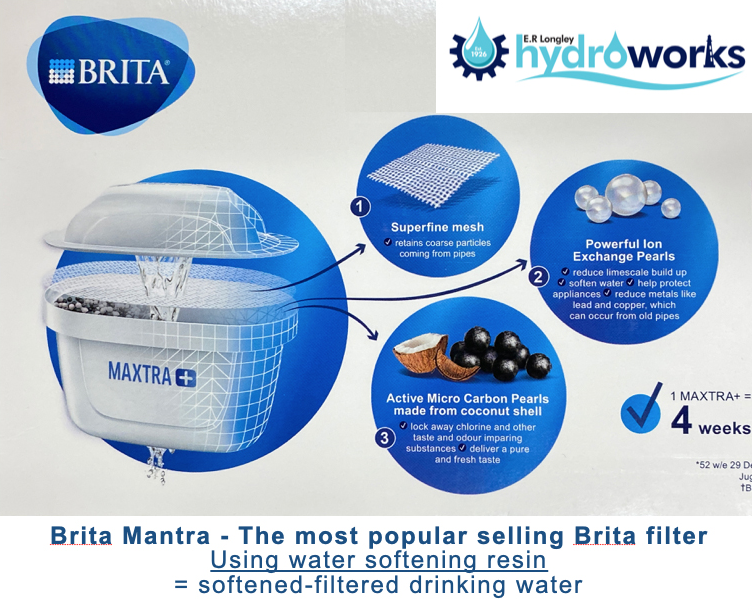
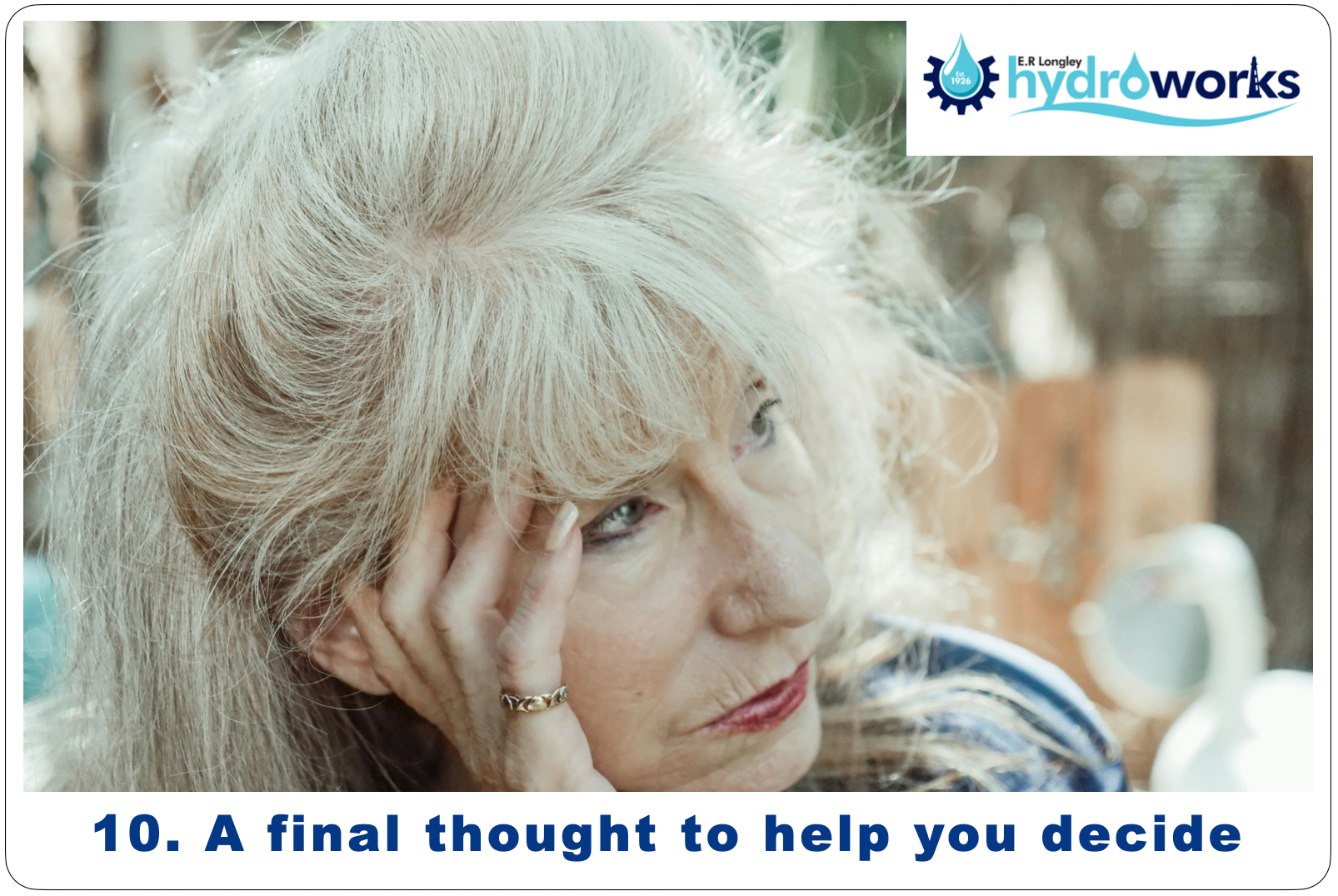
10. Final Thought
Ultimately, the right decision is the one that feels best for you and your family.
And whatever you decide, we’re here to support you every step of the way.
- - - - - - - - - - - - - - - - - - - - - - - - - - - - - - -
